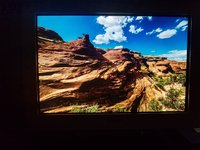XoR_
[H]ard|Gawd
- Joined
- Jan 18, 2016
- Messages
- 1,565
340MHz is enough even for FW900 to hit resolutions that dot size limitations let alone other CRT monitorsOne question though: I guess 340mHz is the fastest chip they have? I'll just be really bummed if we never get a DAC on par with what's in our graphics cards. With Toasty X's pixel clock patcher, you can actually go above 500mHz on analog equipped video cards.
doing faster DAC does not make any sense at all
if you want one though you can always build it yourself with FPGA and DM/HDMI receiver IC
DAC can be built using resistor ladder and then you are limited by FPGA ability to switch pins which is pretty crazy high for new devices
it would be possible (and very easy too!) to add gamma correction and gamut remapping to such device too
see? no need to wait for someone else to make it for you
do not expect anyone to make it for you
DIY =)
![[H]ard|Forum](/styles/hardforum/xenforo/logo_dark.png)

